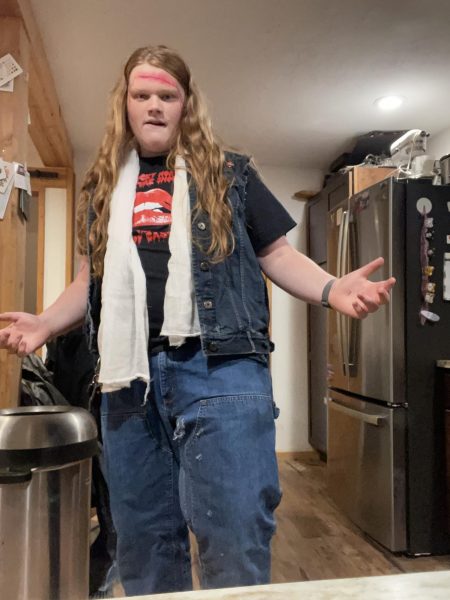Quarantine Baking
May 12, 2020
This month, searches for bread and bread recipes have been at 100% popularity on Google trends for the first time in over a year. Unlike the global stock market trends or covid rates, this data shows some solidarity. In this time of chaos, bread is a comforting and easy to make food. After a few years of experience, during which I’ve made about every type of baking mistake possible, I’ve collected some tips and recipes to make your own bread at home.
The universal dough in most baking is flour, water, sugar, and yeast. These four ingredients can make any kind of pizza dough, artisan bread, doughnuts, or cinnamon rolls. They all follow the same main idea; blooming yeast in warm sugar water, mixing in flour, and letting it rise for 12-24 hours. These foods require little kneading and not much time. Any basic bread recipe (https://www.lifeasastrawberry.com/easy-crusty-french-bread/) can be modified; you can add butter, milk, and sugar for desserts or add oil and salt for pizza and dinner rolls. Understanding how to modify what you have makes baking more fun, and saves hours spent trying to make everything perfect. Baking with yeast is a fluid process with mistakes and changes, and everyone does it differently.
Chibatta and Focaccia are my absolute favorite breads, and are just as easy as the previous recipes. Both these recipes are the best I’ve found so far.
Ciabatta Italian Slipper Bread
One-Hour Rosemary Focaccia Bread
- For all homemade bread, it is essential to work on a baking stone or thick baking sheet that has been preheated to the temp of the recipe. This makes the bread cook more evenly.
- The second most important step is to put a cup of water in an oven-safe container in the oven with the bread. The water creates steam in the oven, making the crust a golden brown color and giving it crunch.
- Brushing italian bread in herbs, olive oil, and coarse salt before and after baking makes these look straight out of a food magazine and taste even better.
- Focaccia can also be made on a baking sheet or in an oven-safe bowl substituted for the pan.
Sourdough starter: This is the high-maintenance cousin of a ciabatta or French bread. It’s been around for all of human history, and yet, it doesn’t make much sense. It’s still very worth it to try this. The 99 cent yeast packets might be quicker, but they may not always be in stock and they don’t always give the rich flavor that you expect from a bakery loaf.
Step 1. Mix 1 cup whole grain wheat or rye flour with ½ cup water in a medium sized bowl and cover loosely with plastic wrap. Keep it out of direct sunlight at 70-80°.
- On the second day, between 24-36 hours, you have to “feed” the yeast and keep the right ratio of water, flour, and bacteria. To feed the starter, discard all but ½ cup of the previous mix, and add another ½ cup room-temp water and one cup of bread flour.
- On days 3, 4 and 5, feed the starter twice a day about 12 hours apart. The yeast rises like a mini bread would, so a sign it needs more food is if the dough deflates and is bubbling less. If it looks completely dead, I’ve revived mine using a bit of sugar when I forgot to feed it.
- On day 6, feed it again but keep ⅓ cup of the dough instead of ½. If the starter looks very active and has doubled in size, it is ready to be used with any sourdough bread recipe. If a small piece of dough floats in water, it is ready to use. If not, keep feeding it when deflated or about every 12-14 hours until it has doubled in size or floats.
- After being used in a recipe, the remaining starter can be kept in the fridge and fed once a week with ½ starter to ½ cup water and 1 cup of bread flour.
I’ve used and edited this recipe (Sourdough Starter). It has more tips if the simplified version above doesn’t work for you.
To use the sourdough, this is a really good recipe with pictures for each step:
A Beginner’s Guide to Sourdough Baking












